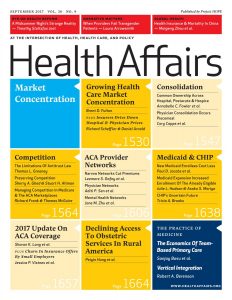Federal health spending plays a central role in the nation’s long-term fiscal outlook. Medicare, Medicaid, the Children’s Health Insurance Program, and private health insurance spending are projected to increase in the coming years. These unsustainable trends—occurring without commensurate improvements in population health— create a burning need for reform: Without meaningful change, rising health care costs will increasingly strain household budgets, crowd out other federal and state priorities, and undermine the nation’s long-term fiscal stability.
Against this urgent backdrop, the United States Government Accountability Office issued its 2024 report, “Highlights of a Forum: Reducing Spending and Enhancing Value in the U.S. Health Care System”. The report summarizes the discussions of an expert forum convened in October 2024. Dr. Papanicolas and Dr. Scheffler, the director of the Petris Center, highlight below the areas the group believes are most critical for policymakers to consider and offer new insights that have gained salience given shifts in the policy landscape since the forum was conducted.
Please view the report linked here.





 Dr. Scheffler and Dr. Arnold’s new paper
Dr. Scheffler and Dr. Arnold’s new paper  The Petris Center has a new article published in the January issue of Health Affairs, entitled “Consumers Buy Lower-Cost Plans on Covered California, Suggesting Exposure to Premium Increases Less than Commonly Reported.” The paper was authored by the Petris Center’s Graduate Student Researcher Daniel Arnold, Dr. Brent Fulton, and Dr. Scheffler, along with Jon Gabel and researchers from NORC.
The Petris Center has a new article published in the January issue of Health Affairs, entitled “Consumers Buy Lower-Cost Plans on Covered California, Suggesting Exposure to Premium Increases Less than Commonly Reported.” The paper was authored by the Petris Center’s Graduate Student Researcher Daniel Arnold, Dr. Brent Fulton, and Dr. Scheffler, along with Jon Gabel and researchers from NORC. A new article by the Petris Center’s Dr. Scheffler, Dr. Fulton, and Researcher Daniel Arnold – “Consumers Buy Lower-Cost Plans on Covered California Suggesting Premium Increases Are Less than Commonly Reported” – was accepted for publication by Health Affairs. This piece was authored along with Jon Gabel, Heidi Whitmore, Samuel Stromberg, and Matthew Green from NORC at the University of Chicago.
A new article by the Petris Center’s Dr. Scheffler, Dr. Fulton, and Researcher Daniel Arnold – “Consumers Buy Lower-Cost Plans on Covered California Suggesting Premium Increases Are Less than Commonly Reported” – was accepted for publication by Health Affairs. This piece was authored along with Jon Gabel, Heidi Whitmore, Samuel Stromberg, and Matthew Green from NORC at the University of Chicago.